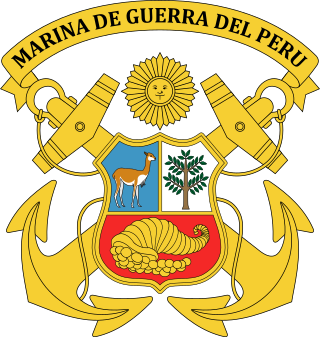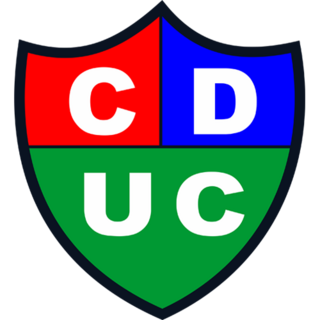
Ecuador, officially the Republic of Ecuador, is a country in northwestern South America, bordered by Colombia on the north, Peru on the east and south, and the Pacific Ocean on the west. It also includes the Galápagos Islands in the Pacific, about 1,000 kilometers (621 mi) west of the mainland. The country's capital is Quito and its largest city is Guayaquil.

The economy of Peru is an emerging, mixed economy characterized by a high level of foreign trade and an upper middle income economy as classified by the World Bank. Peru has the forty-seventh largest economy in the world by total GDP and currently experiences a high human development index. The country was one of the world's fastest-growing economies in 2012, with a GDP growth rate of 6.3%. The economy was expected to increase 9.3% in 2021, in a rebound from the COVID-19 pandemic in Peru. Peru has signed a number of free trade agreements with its main trade partners. China became the nation's largest trading partner following the China–Peru Free Trade Agreement signed on 28 April 2009. Additional free trade agreements have been signed with the United States in 2006, Japan in 2011 and the European Union in 2012. Trade and industry are centralized in Lima while agricultural exports have led to regional development within the nation.

South America is a continent entirely in the Western Hemisphere and mostly in the Southern Hemisphere, with a considerably smaller portion in the Northern Hemisphere. It can also be described as the southern subregion of the Americas.

Ceviche, cebiche, sebiche, or seviche is a dish consisting of fish or shellfish marinated in citrus and seasonings, and is recognized by UNESCO as an expression of Peruvian traditional cuisine and Intangible Cultural Heritage of Humanity. Different versions of ceviche are part of the culinary culture of various Spanish-American countries along the Pacific Ocean where each one is native: Chile, Colombia, Costa Rica, Ecuador, El Salvador, Guatemala, Honduras, Mexico, Nicaragua, Panama and Peru. In Peru it is also considered a flagship dish and cultural heritage.

Lima, founded in 1535 as the Ciudad de los Reyes, is the capital and largest city of Peru. It is located in the valleys of the Chillón, Rímac and Lurín Rivers, in the desert zone of the central coastal part of the country, overlooking the Pacific Ocean. The city is considered the political, cultural, financial and commercial center of Peru. Due to its geostrategic importance, the Globalization and World Cities Research Network has categorized it as a "beta" tier city. Jurisdictionally, the metropolis extends mainly within the province of Lima and in a smaller portion, to the west, within the Constitutional Province of Callao, where the seaport and the Jorge Chávez Airport are located. Both provinces have regional autonomy since 2002.

Alejandro Celestino Toledo Manrique is a Peruvian former politician who served as President of Peru, from 2001 to 2006. He gained international prominence after leading the opposition against president Alberto Fujimori, who held the presidency from 1990 to 2000.

Pisco is a colorless or yellowish-to-amber-colored spirit produced in winemaking regions of Peru and Chile. Made by distilling fermented grape juice into a high-proof spirit, it was developed by 16th-century Spanish settlers as an alternative to orujo, a pomace brandy that was being imported from Spain. It had the advantages of being produced from abundant domestically grown fruit and reducing the volume of alcoholic beverages transported to remote locations.

Peru, officially the Republic of Peru, is a country in western South America. It is bordered in the north by Ecuador and Colombia, in the east by Brazil, in the southeast by Bolivia, in the south by Chile, and in the south and west by the Pacific Ocean. Peru is a megadiverse country, with habitats ranging from the arid plains of the Pacific coastal region in the west, to the peaks of the Andes mountains extending from the north to the southeast of the country, to the tropical Amazon basin rainforest in the east with the Amazon River. Peru has a population of over 32 million, and its capital and largest city is Lima. At 1,285,216 km2 (496,225 sq mi), Peru is the 19th largest country in the world, and the third largest in South America.

Callao is a Peruvian seaside city and region on the Pacific Ocean in the Lima metropolitan area. Callao is Peru's chief seaport and home to its main airport, Jorge Chávez International Airport. Callao municipality consists of the whole Callao Region, which is also coterminous with the Province of Callao. Founded in 1537 by the Spaniards, the city has a long naval history as one of the main ports in Latin America and the Pacific, as it was one of vital Spanish towns during the colonial era. Central Callao is about 15 km (9.3 mi) west of the Historic Centre of Lima.

The Peruvian Navy is the branch of the Peruvian Armed Forces tasked with surveillance, patrol and defense on lakes, rivers and the Pacific Ocean up to 200 nautical miles from the Peruvian littoral. Additional missions include assistance in safeguarding internal security, conducting disaster relief operations and participating in international peacekeeping operations.

The Peru national football team, nicknamed La Bicolor, represents Peru in men's international football. The national team has been organised, since 1927, by the Peruvian Football Federation (FPF). The FPF constitutes one of the ten members of FIFA's South American Football Confederation (CONMEBOL). Peru has won the Copa América twice, and has qualified for the FIFA World Cup five times ; the team also participated in the 1936 Olympic football competition and has reached the semi-finals of the CONCACAF Gold Cup. The team plays most of its home matches at the Estadio Nacional in Lima, the country's capital.

The National University of San Marcos is a public research university located in Lima, the capital of Peru. In the Americas, it is the first officially established and the oldest continuously operating university.

A pisco sour is an alcoholic cocktail of Peruvian origin that is traditional to both Peruvian and Chilean cuisine. The drink's name comes from pisco, a brandy which is its base liquor, and the cocktail term sour, implying sour citrus juice and sweetener components. The Peruvian pisco sour uses Peruvian pisco and adds freshly squeezed lime juice, simple syrup, ice, egg white, and Angostura bitters. The Chilean version is similar, but uses Chilean pisco and Pica lime, and excludes the bitters and egg white. Other variants of the cocktail include those created with fruits like pineapple or plants such as coca leaves.

Club Universitario de Deportes, popularly known as Universitario or simply as La "U", is a Peruvian sports club based in Lima, which has football as its main activity. It also has women's football, voleyball and basketball sections. The club was founded in August 1924 under the name Federación Universitaria by students of the National University of San Marcos but was forced to rename in 1931. Since 1928, the club competes in the top tier of Peruvian football, the Liga 1, which makes it the Peruvian team that has remained unrelegated for the longest time. In 2000, they opened the 80,000-capacity Estadio Monumental, currently the largest stadium in Peru and second-largest in South America, retiring their smaller Estadio Teodoro Lolo Fernández. Universitario and Alianza Lima participate in the Peruvian Clásico, which has its roots in the club's first participation in the Peruvian Primera División in 1928. It also has rivalries with Sporting Cristal, Deportivo Municipal, and Sport Boys.

The National Stadium of Peru is a multi-purpose stadium located in Lima, Peru. Its current capacity is 50,086 seats as stated by the Peruvian Football Federation without the lodges for some thousands more. The stadium was first inaugurated on 27 October 1952 for the 1953 South American Championship—replacing the Stadium Nacional—and is Peru's principal and national stadium. It has hosted three of the six South American Championship/Copa América football competitions held in Peru. It is referred to as the Coloso de José Díaz because of its proximity to a street of the same name.

José Paolo Guerrero Gonzáles is a Peruvian professional footballer who plays as a striker for Peruvian Primera División club Alianza Lima and the Peru national team.

Ollanta Moisés Humala Tasso is a Peruvian politician and former military officer who served as President of Peru from 2011 to 2016. Originally a socialist and left-wing nationalist, he is considered to have shifted towards neoliberalism and the political centre during his presidency.

General elections were held in Peru on 10 April 2011 to elect the President, the Vice Presidents, 130 members of Congress and five members of the Andean Parliament. As no presidential candidate received a majority in the first round, a second round was held on 5 June to determine the successor of outgoing president Alan García. Former army officer Ollanta Humala narrowly defeated Keiko Fujimori, daughter of imprisoned former President Alberto Fujimori. Humala was sworn in as the 94th President of Peru on 28 July.

Universidad Técnica de Cajamarca is a Peruvian football club based in the city of Cajamarca, Peru and is the largest in the city. It was founded in 1964 and play in the Peruvian Primera División, also known as the Liga 1, which is the top flight of the Peruvian football league system. They are nicknamed El Gavilán del Norte, The Sparrowhawk of the North. The clubs logo is very similar to another Peruvian club, Universitario de Deportes. The teams home ground is Estadio Héroes de San Ramón which has a capacity of 18,000.

Club Deportivo Unión Comercio, simply known as Unión Comercio, is a Peruvian professional football club based in the city of Nueva Cajamarca, San Martín, Peru. The club plays in the Peruvian Segunda División, the second tier of Peruvian football, after being relegated in 2024. Despite being based in Nueva Cajamarca, Unión Comercio plays their home games at Estadio Carlos Vidaurre García in Tarapoto.




















